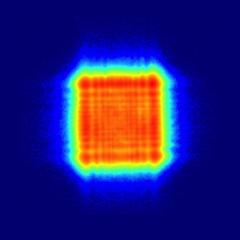URL: https://www.desy.de/news/news_search/index_eng.html
Breadcrumb Navigation
DESY News: European XFEL starts operation phase
News
News from the DESY research centre
European XFEL starts operation phase
The world’s largest X-ray laser, the European XFEL, has now entered its operation phase. Over the past few weeks, engineers and scientists at European XFEL and DESY have been working to ensure that the experiment stations are equipped with instruments and that the X-ray beam meets the parameters needed to start doing experiments. On Friday, the European XFEL Council, the highest governing organ of European XFEL, agreed that the conditions for the start of operation have now been satisfied, and consequently released the funds designated for the operation phase. The X-ray laser produces extremely bright and short X-ray flashes that, with the help of specialised experiment stations, allow scientists to gain completely new insights into the atomic details and processes of the nanoworld. First experiments are now possible and have started for commissioning purposes; user operation with scientific research is scheduled to begin in September.

“Since successfully producing the first laser light in May, DESY and European XFEL have continued to make significant progress. I am very pleased that we have met the requirements to start research at the X-ray laser,” said European XFEL Managing Director Prof. Robert Feidenhans’l.
In order to qualify for the transition from commissioning to operation phase, the facility had to meet a number of pre-determined technical requirements. These requirements state that the pulses of the X-ray laser at a wavelength of maximally two Ångströms (0.2 nanometres) reach a typically high intensity and remain stable. In addition, the two experiment stations of the first beamline should be sufficiently equipped so that first scientific experiments can be carried out.
Other developments since producing the first laser light in May, include producing short waved so-called hard X-rays, successfully guiding the X-ray beam via special mirrors into the experiment hutches, and commissioning a number of highly specialised instruments for characterizing the properties of the X-ray beam. Directly after the first X-ray beam was guided into the hutches on 23 June, teams at European XFEL started with the characterisation of the beam and experiments for the commissioning of the instruments.
With a wavelength of initially two Ångströms and the required peak light intensity, the X-ray light will allow the recording of atomic detail. At two experiment stations first experiments are now possible: At the instrument FXE (Femtosecond X-ray Experiments), that is designed for the research of extremely fast processes, and at the instrument SPB/SFX (Single Particles, Clusters, and Biomolecules / Serial Femtosecond Crystallography), designed for studying biomolecules and biological structures.
The intense X-ray flashes of the European XFEL are generated by fast, high-energy electrons from a superconducting particle accelerator. The accelerator, the largest and most modern of its kind, was constructed by a consortium of 17 international research institutions lead by DESY during the past seven years. The 3.4 kilometres long X-ray laser runs underground from the DESY campus in Hamburg to the neighbouring town of Schenefeld in Schleswig-Holstein. At present, 11 countries have signed the European XFEL convention, DESY is the main shareholder. The official opening of the facility will take place on 1 September and the first scientific users are expected within the weeks following that.
Press release of the European XFEL company



